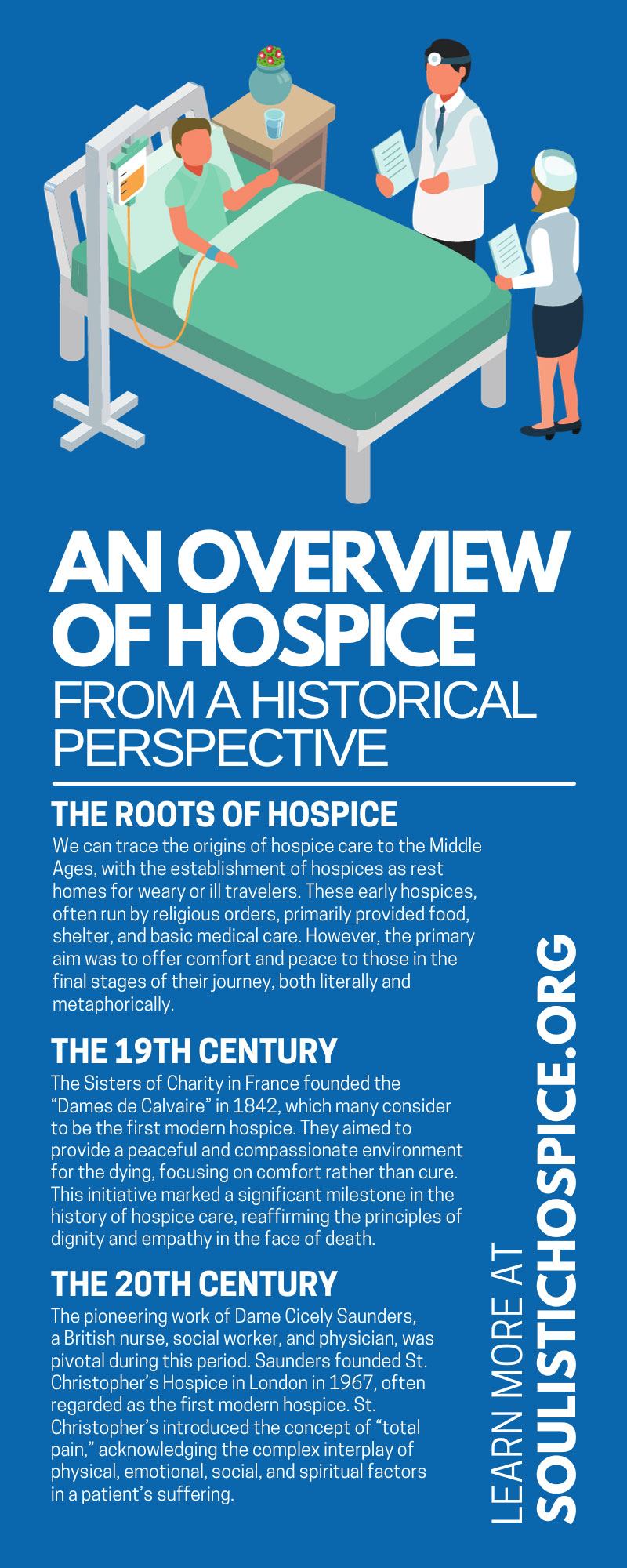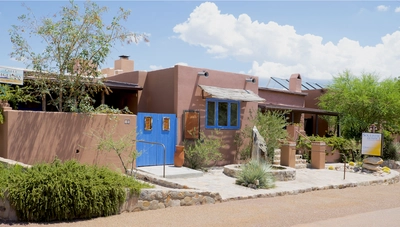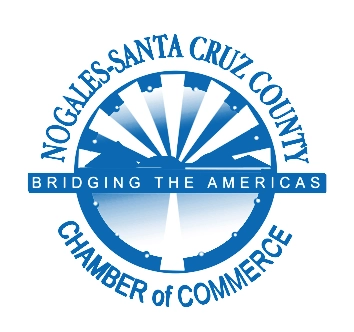
The concept of hospice, a space of compassion and understanding at life’s end, has a rich and complex history dating back centuries. Below, we provide an overview of hospice from a historical perspective, tracing its evolution from its humble beginnings in the Middle Ages to its modern role as a cornerstone of palliative care. Discover the enduring principles of empathy and dignity in the face of mortality that have remained steadfast throughout its evolution as we delve into this enlightening exploration of the chronicle of hospice.
What Is Hospice?
Hospice is a particular form of care that provides comfort and support to patients and their families during the end stages of life. It focuses on enhancing the quality of life rather than seeking cures, incorporating the physical, psychological, and spiritual aspects of care. Hospice care also extends its support to the bereaved families, helping them navigate the emotional journey of losing a loved one.
Historically rooted in the holistic approach to death, hospice has evolved, continuously reassessing its practices to better meet society’s changing needs and expectations. We’ll explore this remarkable evolution, tracing the narrative of hospice from its inception to its current standing in modern healthcare.
The Roots of Hospice
We can trace the origins of hospice care to the Middle Ages, with the establishment of hospices as rest homes for weary or ill travelers. These early hospices, often run by religious orders, primarily provided food, shelter, and basic medical care. However, the primary aim was to offer comfort and peace to those in the final stages of their journey, both literally and metaphorically.
Their approach to care was holistic, tending to their guests’ physical, emotional, and spiritual needs. This compassionate mode of care laid the foundation for the modern concept of hospice, highlighting the individual’s dignity and the importance of comfort in the face of mortality.
The 19th Century
Throughout the 19th century, societal attitudes toward death and care for the dying began to shift. The Industrial Revolution led to urbanization and the breakdown of traditional family structures, which had significant implications for caring for the dying. Death was increasingly viewed as a medical event for hospitals to manage rather than family members in their homes.
However, this period also saw the emergence of a counter-movement advocating for a more humane approach to end-of-life care. The Sisters of Charity in France founded the “Dames de Calvaire” in 1842, which many consider to be the first modern hospice. They aimed to provide a peaceful and compassionate environment for the dying, focusing on comfort rather than cure. This initiative marked a significant milestone in the history of hospice care, reaffirming the principles of dignity and empathy in the face of death.
The 20th Century
The 20th century witnessed monumental advancements in hospice care, marked by an increasingly systematic approach to palliative care and a greater emphasis on pain management. The pioneering work of Dame Cicely Saunders, a British nurse, social worker, and physician, was pivotal during this period. Saunders founded St. Christopher’s Hospice in London in 1967, often regarded as the first modern hospice. St. Christopher’s introduced the concept of “total pain,” acknowledging the complex interplay of physical, emotional, social, and spiritual factors in a patient’s suffering.
This period marked a significant shift toward holistic patient care, which continues to shape the hospice philosophy today. Saunders’ work and philosophy inspired the global spread of hospice care, including its introduction to the United States in the 1970s. The healthcare system firmly established hospice care as a critical component of the healthcare system by the end of the 20th century, reinforcing the importance of compassion, dignity, and holistic care at the end of one’s life.
The 21st Century
The evolution of hospice care continued into the 21st century with the advent of technological advancements and a greater focus on personalized care. Modern hospice care leverages technology to improve the quality of life for patients, enabling pain management through advanced medical techniques and improving communication between patients, families, and caregivers.
Technologies such as telemedicine have also enabled remote monitoring and consultation, which is particularly beneficial for patients in rural areas. The integration of interdisciplinary teams in hospice care, comprising of doctors, nurses, social workers, therapists, and spiritual counselors, further exemplifies the commitment to holistic care.
Additionally, the focus of hospice care has broadened to include bereavement support for families, recognizing that the journey does not end with the patient’s passing. The tremendous strides in hospice care in the 21st century underscore its enduring mission of providing compassionate, personalized care and preserving dignity at the end of life.
How Hospice Has Evolved
The evolution of hospice from its early origins to its contemporary model underscores a consistent dedication to person-centered, holistic care. With their emphasis on providing comfort and serenity to weary travelers at the end of their life’s journey, the medieval hospices laid the groundwork for the present-day hospice philosophy.
While the initial focus was primarily on providing shelter and basic care, the concept has expanded to include a comprehensive approach to palliative care that encompasses physical comfort and emotional and spiritual support. Hospice has nevertheless managed to retain its core principles in the face of modern medical advancements and the shift toward hospital-based care in the 19th century.
Today’s hospice organizations utilize advanced technologies and interdisciplinary teams to enhance the quality of life for patients in their final stages, all while perpetuating the foundational philosophy of providing a compassionate, dignified transition at life’s end.
We hope this overview of hospice from a historical perspective helps you to better understand how this compassionate care has evolved into what it is today. Despite the societal and technological changes over the centuries, the essence of hospice care—providing compassionate and dignified end-of-life care—has remained the same. Empathy, comfort, and respect for the individual have been the guiding principles of hospice care from the humble hospices of the Middle Ages to the comprehensive, interdisciplinary approach of the 21st century. Contact Soulistic Hospice today to learn more about holistic hospice in Tucson, AZ. The future of hospice care, enriched by technology and an ever-growing understanding of patient needs, will continue to uphold these timeless principles, ensuring the preservation of dignity and quality of life until the very end.









